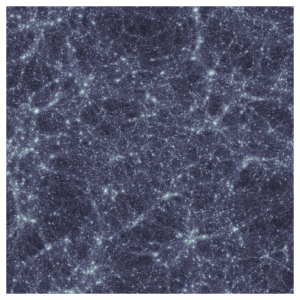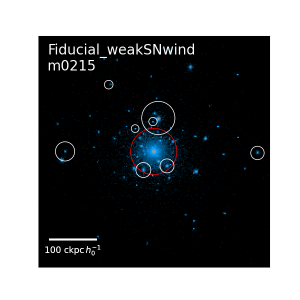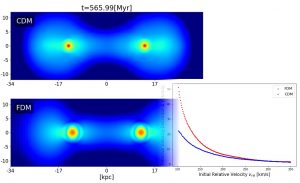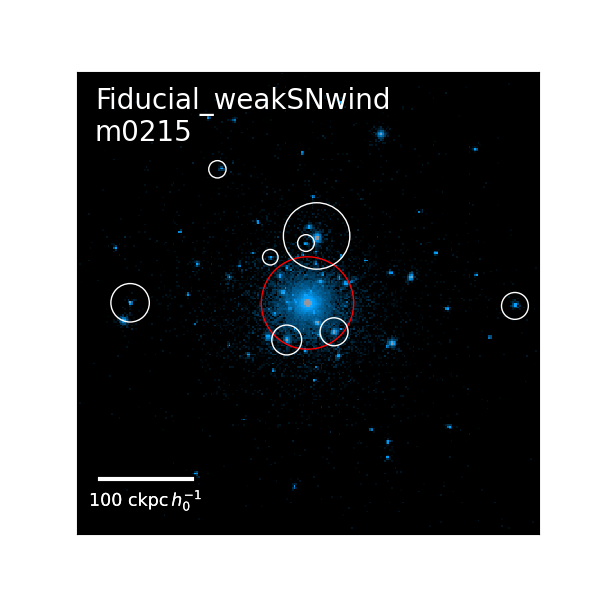Astrophysics & Cosmology
Cosmology
Our research interests span from large-scale structures, galaxy ormation hydrodynamic simulations to gamma rays decaying in the atmosphere coming from violent astronomical objects. We use both simulated and observational data to do the statistical and scientific analysis. Some of us are engaged in International observatories such as DESI(Dark Energy Spectroscopic Instrument) and HAWC(High Altitude Water Cherenkov).

1. Large-scale Structure and Cosmology
To study large-scale structures, we first focus on clusters and cluster finding algorithms while developing our own (Mulguisin), in order to create galaxy clusters in a way that more closely resembles how the human eye and brain identify patterns. We are also interested in filamentary structures. Using DisPerSE, we extract the filamentary structures and analyze the co-evolving nature of galaxies and the structures. This understanding of large-scale structures can be applied to estimating the cosmological parameters, by the method of higher-order statistics beyond two-point correlation functions and deep learning, involving Convolutional Neural Network and Vision Transformer. We further analyze the deep learning results to connect the cosmological parameters to the local density in the universe.
2. Galaxy Formation Hydrodynamic Simulations
Our research focuses on advancing theoretical models that accurately describe the formation and evolution of galaxies, including the supermassive black holes residing at their centers, using state-of-the-art hydrodynamical simulations on supercomputers. By incorporating the latest astrophysical theories, we strive to create the most realistic simulations. Our primary objective is to enhance our understanding of baryonic processes in galaxy evolution simulations by refining AGN and SN feedback models. Through high-resolution simulations, we investigate how these feedback mechanisms influence the evolution of galaxies in diverse scenarios. Moreover, we employ radiation transfer computational techniques to generate synthetic images that mimic ongoing/upcoming observations from advanced instruments like the James Webb Space Telescope. Leveraging artificial intelligence, we conduct detailed comparisons between our simulations and observational data to unravel the complex phenomena associated with the rapid growth of supermassive black holes and their intricate interplay with host galaxies. Ultimately, our work aims to shed light on fundamental questions regarding the origin, growth, and dynamics of galaxies and supermassive black holes, contributing to the advancement of astrophysical knowledge.

3. Ultra-light Dark Matter

Recently, ΛCDM model still has some tension in small-scales(~kpc). Some alternatives are suggested to resolve this issue, and one of them is Fuzzy Dark Matter (FDM) model, consisting of bosonic ultra light dark matter(1e-22V/c^2) without self interacting. FDM halo is the solitonic core of Bose-Einstein Condensated state of FDM. There are mainly two dynamical properties of FDM dramatically different from CDM: First, dynamical friction of FDM is much weaker than that of CDM. This could explain the falling time of the Fornax dwarf spheroidal galaxy, which is longer than the prediction by CDM. Second, unstable FDM states stabilize with mass loss due to the excessive kinetic energy, which is called Gravitational Cooling. We are interested in how these two properties are significant for head-on collision, binary black hole/stellar dynamics inside halo, which is expected to solve 1)Final-Parsec problem (the observed merger time scale of supermassive black hole is shorter than the prediction by CDM) and 2) Angular Momentum Catastrophe (the observed angular momenta of disk galaxies are faster than the prediction by CDM).


